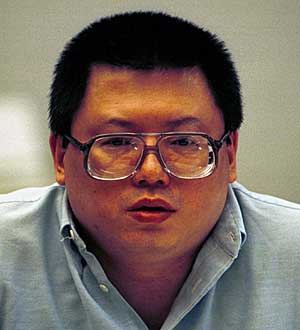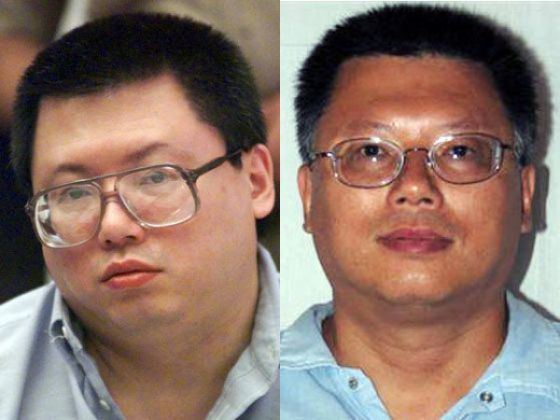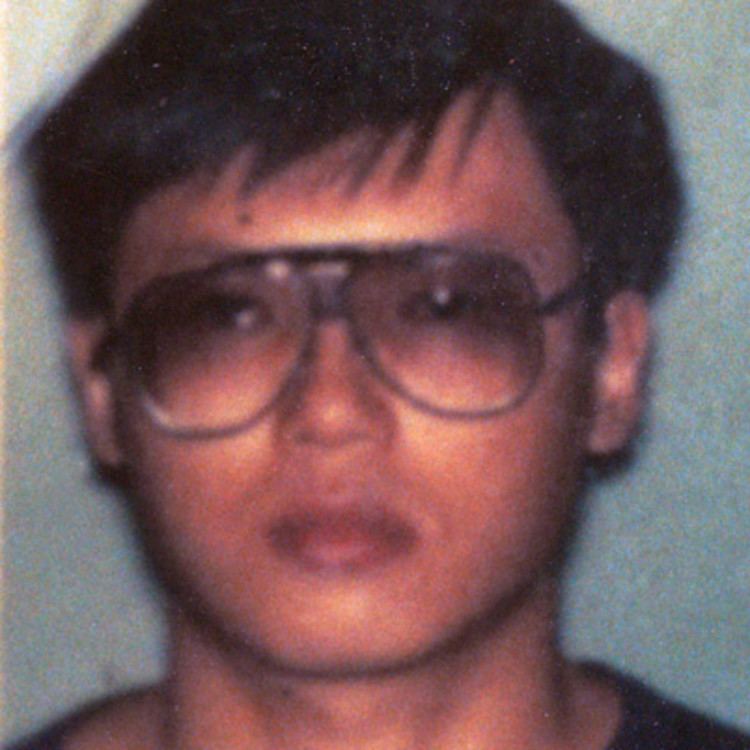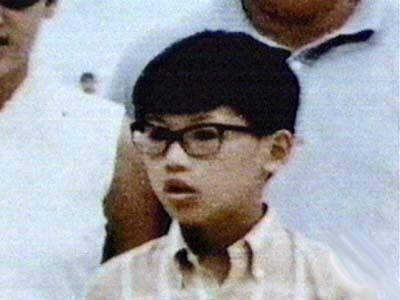Victims 11–25 Span of killings 1983–1985 Date apprehended July 6, 1985 | Name Charles Ng Parents Oiping Ng, Kenneth Ng | |
 | ||
Education | ||
Charles ng and leonard lake the torture bunker duo from hell serial killer crime documentary
Charles Ng Chi-Tat (traditional Chinese: 吳志達; simplified Chinese: 吴志达; Jyutping: ng4 zi3 daat6; born December 24, 1960 in Hong Kong) is a serial killer who operated in the United States. He is believed to have raped, tortured and murdered between 11 and 25 victims with his accomplice Leonard Lake at Lake's cabin in Calaveras County, California, in the Sierra Nevada foothills 150 miles east of San Francisco.
Contents
- Charles ng and leonard lake the torture bunker duo from hell serial killer crime documentary
- Interviewing Victims Horrifying Caught on Camera Leonard Lake Charles Ng Footage
- Early life
- US Marine Corps
- Murders
- Murder trial
- References

After his 1985 arrest and imprisonment in Canada on robbery and weapons charges, followed by a lengthy dispute between Canada and the United States, Ng was extradited to California, tried, and convicted of 11 murders. He is currently on death row at San Quentin State Prison.

Interviewing Victims - Horrifying Caught on Camera - Leonard Lake & Charles Ng Footage
Early life

Ng was born in British Hong Kong, the son of a wealthy Chinese executive and his wife. As a child, Ng was harshly disciplined and abused by his father. As a teenager, he was described as a troubled loner and was expelled from several schools. After his arrest for shoplifting at age 15, he went, at his father's insistence, to Bentham Grammar School, a boarding school in North Yorkshire, England. Not long after arriving, Ng was expelled for stealing from other students and returned to Hong Kong.

Ng moved to the United States on a student visa in 1978, and studied biology at the College of Notre Dame in Belmont, California. He dropped out after one semester. At that time, he met Leonard Lake. Soon after, he was involved in a hit and run accident, and to avoid prosecution he enlisted in the United States Marine Corps.
U.S. Marine Corps
Despite not being a U.S. citizen, Ng became a Marine in 1979 with the help, he said, of a recruiting sergeant, and false documents attesting to his birth in Bloomington, Indiana. After less than a year of service, he was arrested by military police for theft of automatic weapons from MCAS Kaneohe Bay in Hawaii. Facing court-martial, he deserted the Marines in 1980 and made his way back to northern California, where he reunited with Lake. In 1982, federal authorities raided the mobile home they shared in Ukiah, seizing a large stash of illegal weapons and explosives. Lake was released on $6,000 bond; he jumped bail and drifted around the state, using a series of pseudonyms. Ng was returned to the Marines' custody and pleaded guilty to the theft and desertion charges. Under terms of his plea deal, he was paroled and dishonorably discharged in 1984 after serving 18 months in the military stockade at Leavenworth Federal Penitentiary.
Murders
After his release, Ng immediately contacted Lake, who was renting a remote cabin near Wilseyville in Calaveras County, east of San Francisco, and invited Ng to join him. Next to the cabin, Lake had built a structure described in his journals as a "dungeon". He probably had already murdered his brother Donald, and his friend and best man Charles Gunnar, stealing their money and Gunnar's identity. Over the next year, Lake and Ng indulged in an orgy of rape, torture, and murder. Their victims included their neighbor Lonnie Bond, his girlfriend Brenda O'Connor, their infant son Lonnie Jr., Harvey and Deborah Dubs, and their young son Sean. According to court records, they killed the men and babies immediately but kept the women alive, raping and torturing them, before murdering them or allowing them to die from their injuries. Other known victims included Ng's workmates, relatives and friends who came looking for Bond and O'Connor, and two gay men.
Their rampage might have gone on longer if not for Ng's kleptomania. On June 2, 1985, Ng was caught shoplifting a vise from a San Francisco hardware store and fled the scene. Lake later drove to the store and attempted to pay for the vise, but by then police had arrived. Officers noticed that Lake bore no resemblance to the photo on his drivers license, which carried the name of Robin Stapley, a San Diego man reported missing by his family several weeks earlier. After a gun equipped with a silencer was found in the trunk of Lake's vehicle, he was arrested and positively identified via a fingerprint search. In custody, while awaiting arraignment, Lake swallowed cyanide pills that he had sewn into his clothes and died four days later.
The license plate on Lake's vehicle was registered to Lake, but the vehicle itself was registered to Paul Cosner, who had disappeared in November 1984. Lake's auto registration led detectives to the property in Wilseyville, where they found Stapley's truck and Bond's car, and behind the cabin, the dungeon. In a makeshift burial site nearby, police unearthed roughly 40 pounds of burned and crushed human bone fragments corresponding to a minimum of 11 bodies. They also found a hand-drawn "treasure map", leading them to two buried five-gallon buckets: One contained envelopes with names and victims' IDs, suggesting that the total body count might be as high as 25. In the other bucket were Lake's handwritten journals for the years 1983 and 1984, and two videotapes documenting the torture of two of their victims. In one of the tapes, Ng is seen telling victim Brenda O'Connor, "You can cry and stuff, like the rest of them, but it won't do any good. We are pretty...cold-hearted, so to speak." In the other, Deborah Dubs is shown being assaulted so severely that she "could not have survived".
Ng, meanwhile, had fled to Calgary, Alberta, Canada, where his sister resided. He lived, undetected, in a lean-to in Fish Creek Provincial Park until his penchant for theft did him in yet again. On July 6, 1985, he was arrested by the Calgary Police Service after shooting security guard Sean Doyle in the hand while resisting arrest for stealing a can of salmon from a Calgary grocery store. He was charged and subsequently convicted of shoplifting, assault with a weapon, and possession of a concealed firearm, and was sentenced to four and a half years in prison. After serving his sentence, he remained incarcerated pending an extradition request from California authorities.
Ng fought a protracted legal battle against extradition on the grounds that Canada—which has no death penalty—would be violating the Canadian Charter of Rights and Freedoms by permitting him to stand trial in California for capital murder. A habeas corpus petition and an appeal to the Alberta Court of Appeal were both denied. In 1991, the Supreme Court of Canada also ruled against him, and he was extradited to California later that year.
Murder trial
In Calaveras County, Ng was indicted on 12 counts of first degree murder. After a change of venue to Orange County, he initiated a protracted series of pretrial motions and stalling tactics. He sued the state over his temporary detainment at Folsom Prison—where he was caught hiding maps, fake IDs, and other escape paraphernalia—and filed challenges against four of the judges assigned to his case. He lodged a long series of complaints regarding the strength of his eyeglasses, the temperature of his food, and his right to practice origami in his jail cell. Ng went through a total of 10 attorneys, some of whom ended up defending him a second time. He also filed a malpractice suit against several of the attorneys, citing incompetent representation. After claiming that he had lost trust and confidence in all of his lawyers, he was allowed to represent himself—which delayed the trial another year while he researched applicable laws. His trial finally began six years after his extradition, in October 1998.
Despite the video evidence and information in Lake's voluminous diaries, Ng maintained that he was merely an observer—that Lake planned and committed all of the kidnaps, rapes, and murders unassisted. He further maintained that he was dependent upon Lake for direction, that the abuse he suffered at the hands of his father was a mitigating factor, and that his good behavior behind bars showed that he should be imprisoned for life rather than executed. Psychiatrist Stuart Grassian testified that Ng had dependent personality disorder, but admitted under cross-examination that he had not viewed the tapes that showed Ng participating in the crimes. Clinical psychologist Abraham Nievod agreed with the diagnosis of dependent personality disorder, and opined that Ng's behavior in the tapes indicated that he was attempting to "mirror" and please Lake. Four prison guards, two sheriff's deputies, a prison library employee, and a prison counselor all testified that Ng was a model prisoner. Four former Marines who had known Ng while he was serving in the Marine Corps testified that he was quiet and well-behaved. Ng's parents both testified about his troubled childhood, and expressed remorse for their son's behavior.
Ng insisted on taking the stand in his own defense, which allowed prosecutors to introduce additional evidence that helped define Ng's role in all aspects of the crimes. One significant item was a photo of Ng in his prison cell, with cartoons he had sketched of his victims hanging on the wall behind him.
In February 1999, Ng was convicted of 11 of the 12 homicides—six men, three women, and two male infants; jurors deadlocked on the twelfth charge—and sentenced Ng to death. The presiding judge rejected a motion to reduce the jury's death sentence recommendation. "Mr. Ng was not under any duress," he said, "nor does the evidence support that he was under the domination of Leonard Lake." Ng's prosecution cost the State of California approximately $20 million, at the time Californiathe most expensive trial in the state's history. He remains on death row at San Quentin State Prison.
